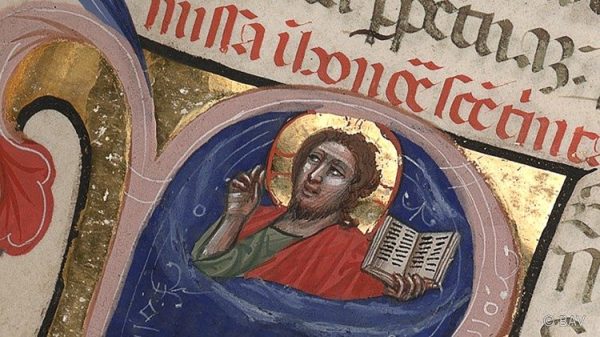It’s all about what’s missing
 Today, the Gospel for the Second Sunday of Ordinary Time presents us with what John describes as the first of Jesus’ signs when Jesus changes water to wine at the wedding at Cana.
Today, the Gospel for the Second Sunday of Ordinary Time presents us with what John describes as the first of Jesus’ signs when Jesus changes water to wine at the wedding at Cana.
Have you ever noticed that there is more than wine missing at the wedding at Cana? The bride is missing too! But there is a third thing missing – the 120 to 180 gallons of water in the six stone water jars are gone. So, the guests have already drunk all the wine, they have used a ton of water for “ceremonial washing”, and the bride hasn’t shown up. What a disaster!
What could all this mean?
A clue to understand the manifestation of the Lord’s glory in the first of Jesus signs, the wedding at Cana, is found in the episode that follows -- the cleansing of the temple. Here, we understand that the third day, the day on which John says the wedding takes place, is the day on which the temple of Jesus’ body would rise again after its destruction. This wedding is connected with Jesus’ death and resurrection. In fact, Jesus uses the same strange language for His mother who stands under His cross. And we know that Jesus uses the term hour when referring to His death.
Let’s go back to the wedding and what’s missing
Wine – the symbol of joy that Isaiah prophesied would be abundant at the feast the Lord would prepare for His people after death would be destroyed. The water is also gone from the six stone jars—just one jar shy of seven, the number signifying perfection. This water would have been used in observance of the Mosaic Law that required many types of purification. The stone jars is another allusion to the Mosaic law observed in a way that led people to fear a God who was always ready to punish for the slightest infraction.
For some reason, we are witnessing a wedding that makes no sense at all
Let’s take the wedding symbolism a step further. The prophets had already begun to understand that God wanted to be in a nuptial relationship with His people. Instead, as we see in this and the following scene, God’s people were not living their relationship with God that way. They were serving a god whom they thought they needed to appease by sacrifices, sin-offerings, and constant purification rituals. Yet, some members of Israel had already understood that “holocaust and sin-offering you do not request”, and that carrying out the will of God inscribed in “my inner being” is what brings joy (see Psalm 40).
Jesus rectifies this situation not so much with the physical changing of an exorbitant amount of water into wine, but by pouring out His life for us to the last drop of blood and water. Once and for all, God manifests His undying, unconditional love for His bride who is sometimes incapable of showing up for her own wedding because she feels unworthy.
This is a good opportunity to ask ourselves what is missing in our relationship with the Lord. It’s also a good opportunity to remind ourselves that the only thing the Lord wants is that we show up for the wedding.
Sr Bernadette Mary Reis, fsp
Source: vaticannews.va

